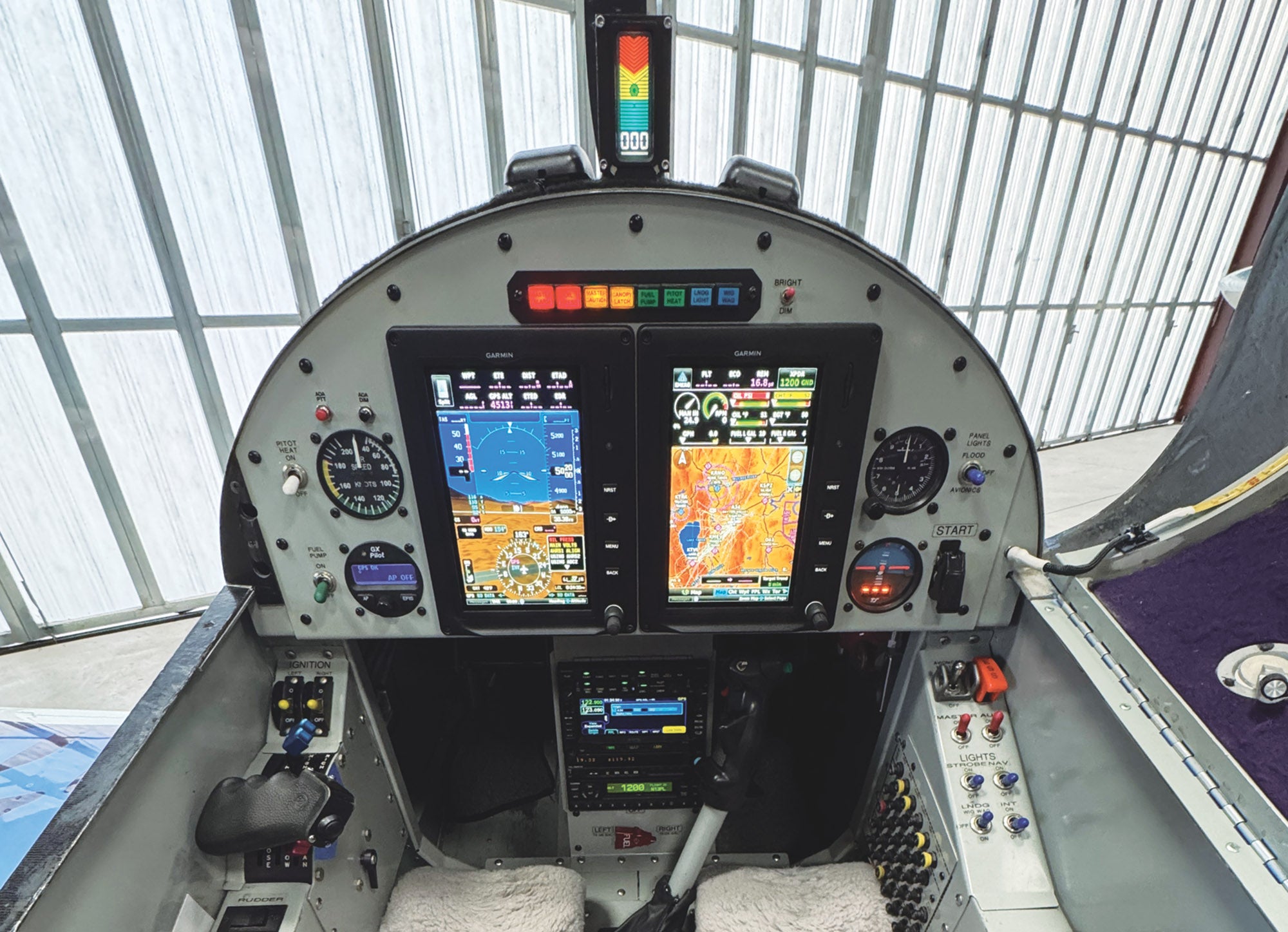
I have been an instrument-rated pilot for close to 45 years now. I have flown lots of single-engine, single-pilot instrument hours and much of it was with steam gauges. I grew up reading Richard Collins in FLYING magazine, so I appreciated all the subtle ways in which an IFR flight could end in tragedy and always remembered the lessons of others so that I wouldn’t come to grief. At least not in the same way.
I have always believed that getting an instrument rating makes you a better pilot—in the same way that getting a glider rating, a helicopter rating or a taildragger endorsement makes you a better pilot. It’s not about the specific skills for the rating—it’s the idea of continuously learning and building upon the skill you have to stretch yourself.
At the same time, I don’t look down at someone who is good with (and at) VFR flying and simply enjoys being in the air on good-weather days—or flying coast to coast on a schedule that weather permits. The truth is that even if you and your airplane are IFR equipped and qualified, the weather is still going to dictate when you can and can’t go. I know of almost no “all-weather” Experimental/Amateur-Built aircraft. Thunderstorms and ice will likely be your downfall long before you have to worry about your destination going zero-zero.
So we have to ask the question: Do we need to build so many IFR homebuilts? The answer, based on my own experience, is probably not. We (my wife and I) own three fully capable IFR airplanes with enough redundancy in everything but the powerplant to safely navigate and fly coupled approaches to minimums. The thing is, not one of them is “IFR current” in terms of databases or pitot/static requirements. Really.
The Specific Need
That wasn’t always the way. When we lived on the Gulf Coast and had to deal with high-humidity, low-visibility conditions in the mornings, keeping everything up to date (airplanes and pilots) made sense. But now that we live in the high desert of Nevada, the number of days in a typical year where our airpark is below minimums can be counted on one set of fingers and toes. When it’s below minimums, there’s ice in those clouds, so we wouldn’t be going anyway.
But what about launching to destinations that are IFR? Well, there is that. We visit Southern California frequently. But the cost in currency flying and databases to shoot a few approaches a year gets to be kind of silly when you’re retired and can simply spend a couple of extra hours at Starbucks or raking the lawn at our cabin in the mountains before launching to the coast later in the day.
I maintain my “skills” by regular test flying and playing around with new avionics. It’s not currency and, to be honest, I am not IFR current. I could get there if I needed to, but I don’t need to—at least for now. I am past the age where an airline is likely to call me up. I also have too much on my plate to go get typed in a business jet to fly folks around, as many of my older professional pilot friends do.
If you’re thinking of building and equipping for IFR flight, consider how often you are actually going to use the capability. The old rule applies—build the airplane that you want, not the airplane that others think that you should build. But that applies both ways. If all of your friends are building IFR machines and you don’t think you’ll use it, why spend the money just to be one of the cool kids?
I get to fly lots and lots of different Experimental aircraft—the RV world is the only one where airplanes are regularly equipped to the standards you need to fly “regular” IFR. Sure, many others have an IFR navigation capability and an autopilot (which makes single-pilot IFR much more comfortable) but no one expects to use them that way unless they find themselves stuck on top. Astute planning can avoid those situations for far less money.
I have flown an IFR Kitfox. But the databases hadn’t been updated since the airplane was new and that should tell you something. There are other traveling machines of course—Glasairs, Lancairs, etc.—that are often equipped and flown IFR. But the bulk of the homebuilt aircraft are flown VFR the vast majority of the time.

An Example
Our latest project is an F1 Rocket—a 180-knot cruiser with long range and good altitude capability. It’s a two-seat airplane to get across the country. Aside from fewer fuel stops and the ability to scoot on up to the low flight levels for smooth air, I doubt that I will use it much more differently than I use my current RV-8.
But it sure seems like the kind of airplane that should be IFR equipped—especially since it has the capability to cruise in the high teens and will have built-in oxygen. And while I have never considered resale value in building or equipping my airplanes to be a big driver, I have to admit that I am reaching an age where I will probably pass this airplane onto another pilot someday—so even if I am not routinely using it for IFR, it might get used that way in the future.
How do you “future proof” an airplane for the next guy? First, make sure to build the electrical system to support failure modes. In other words, build for reliability and possibly redundancy. That way, if someone comes along later they don’t have to put a lot of effort into modifying the base electrical system to give themselves some redundancy.
Second, plan the avionics/EFIS package so that it either has IFR capability or that such capability can easily be added on later. Leave room for an IFR navigator if you don’t put one in to begin with and make sure to plan space for redundant displays and platforms. Having two com radios is a pretty good idea for instrument flying.
How am I equipping the Rocket? Well, I planned a redundant electrical system at the start. Two buses feed all the critical components I need to safely get to the ground under instrument conditions. I really only had room on the panel for a single large-screen EFIS, but I could add a redundant small screen as a backup. So, I went with the Garmin G3X Touch system, including the autopilot and a G5 backup screen. The bonus with the G5 is that it has its own ADAHRS that can be used by the main G3X if the single ADAHRS in the G3X goes belly-up.
You can read more about my thinking in this month’s Eating the Elephant feature on Page 54. In short, my baseline is basically a well-equipped VFR airplane that’s a short reach to full IFR capability. It seems unlikely I’ll use that capability but I wanted it to be there, ready for the next owner.
Deciding to build and equip for IFR is a personal decision—but make sure that you make it for yourself and your situation—not just to keep up with the Joneses. In fact, the Joneses are probably doing what they do to keep up with the Smiths and the Smiths are tired of spending money just because the Johnsons did. Build the airplane that you want, of course—but consider just building the airplane that you need, allowing room for expansion so that if you truly do want more, you can add it in the future.
And with the money you save by not keeping yourself and the airplane ready for that twice-a-year IFR flight to the coast? Spend it on tickets to some exotic location on an airliner being flown by guys who do it for a living.














Ditto. Could not have said it better.
I would never own an aircraft that doesn’t have basic instruments in the panel. I’m a VFR pilot but have been on instruments accidentally twice. Once was weather that was forcing me so low I was worried about water and radio towers. Did the 180 in cloud for about a minute. Second time was a clear winter day when the windshield fogged over and the defroster didn’t work well.
The thing to rememebr about this column is that we are not arguing abou tindtruments vs no instruments – it is about full IFR capability or not. In teh category of “no instruments”, it is again important to build what you need – not what others think you shoudl have, or what you think that others think that you should have!
And I have flown many airplanes on local flights with no instruments at all besides airspeeed, altitude and a few engine gauges – it is…peaceful!
Ah yes. The “Airliner Instrument Panel” we see marketed out there. Necessary in light, single-pilot aircraft? It’s a matter of novelty and “everybody is doing it.” I’m of the mind to go with a less cluttered instrument panel with my RV-14 project.